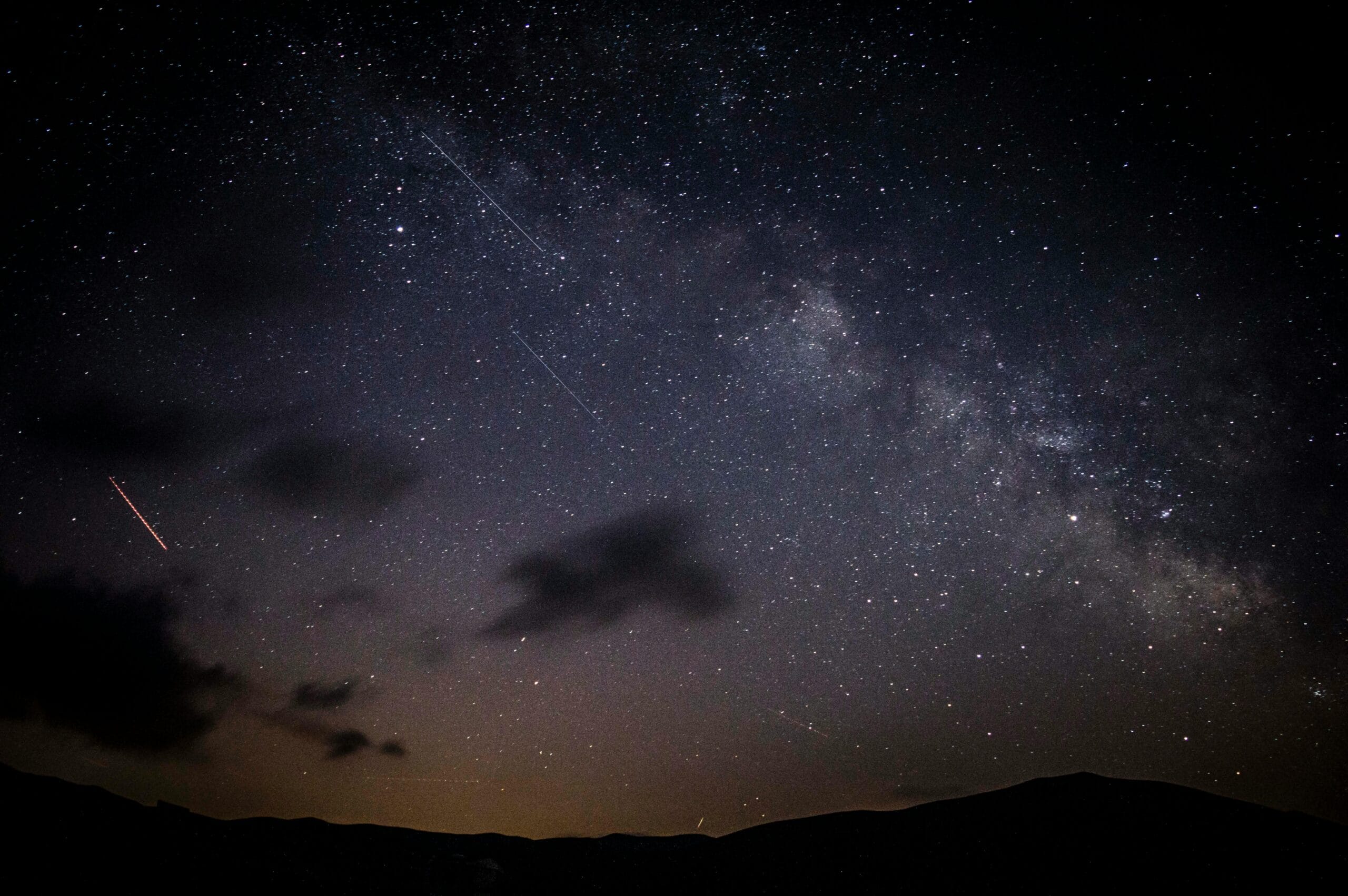In May 2025, it will again be time for one of the most beautiful meteor showers of the year: the Eta Aquarides 2025. This annual star shower offers night sky enthusiasts a stunning spectacle. In this guide, you'll discover the best time to watch, why these meteors are so special, and how to best prepare.

What are the Eta Aquarides?
The Eta Aquarids are an annual meteor shower that occurs when Earth travels through a trail of debris left behind by Halley's comet.
Although Halley's comet itself will not be visible again until 2061, small dust particles from previous passages remain in Earth's orbit around the same time each year. When these particles enter the atmosphere, they burn up and create the fast, bright streaks of light we know as meteors.
The Eta Aquarids are known for:
- High speed: about 65.4 km/s (40.7 miles per second).
- Glowing trains: bright trails that may remain visible for several seconds to minutes.
- Clarity and speed: many meteors are remarkably bright and fast-moving.
When is the peak moment in 2025?
The peak of the Eta Aquarides takes place on the night of 5 on May 6, 2025.
During this night you can enjoy under ideal conditions:
- Southern Hemisphere: up to 50 meteors per hour.
- Northern Hemisphere: about 10 meteors per hour.
In the northern hemisphere, the Eta Aquarids are often visible as Earthgrazers: long, slow meteors that seem to skim right past the horizon - a spectacular sight.
Best time to watch:
- Between 03:00 and 05:00 local time, just before sunrise.
- Viewing direction: toward the east.
Why is the south better for the Eta Aquarides?
The radiant - the point in the sky where the meteors appear to come from - is located in the constellation Aquarius (Aquarius), near the star Eta Aquarii.
In the southern hemisphere, Aquarius is higher in the sky, so many more meteors are visible there.
In the northern hemisphere, the radiant is low above the horizon, so fewer meteors are visible per hour, but the Earthgrazers tend to be more spectacular.
Viewing tips for the 2025 Eta Aquarides
To enjoy the meteor shower to the max:
- Find a dark location: far from city lights.
- Use a sleeping bag or lounger: So you can look at the sky comfortably.
- Let your eyes get used to it: take at least 30 minutes to get used to the dark.
- Avoid screen use: light from phones or tablets interferes with your night vision.
- Look wide: Do not focus only on the radiant, but include as much sky as possible in your field of view.
- Feet heading east: so you automatically look in the direction of most meteors.
Even with the naked eye you can see everything; telescopes or binoculars are not necessary.
Want to take impressive shots of the night sky at the same time? Then a smart telescope like the Seestar S50 an excellent option.
View the Seestar S50 smart telescope.
The origin: Halley's comet
The Eta Aquarids originate from dust and debris left behind by comet 1P/Halley.
Each time Halley approaches the sun, the comet loses small particles that scatter along its orbit. When Earth traverses that orbit, a meteor shower occurs.
Key facts about Halley's comet:
- Job period: approximately 76 years.
- Last visible passage: 1986.
- Next passage: 2061.
- Dimensions: about 16 × 8 × 8 kilometers.
- Reflectivity (albedo): extremely low (0,03) - Halley is one of the darkest objects in the solar system.
- Historical observations: Halley was observed thousands of years ago and is even depicted in the Bayeux carpet (1066).
Halley's comet causes not only the Eta Aquarids, but also the Orionids in October. A blog post on this will follow.
Where do meteors come from?
Meteors are small particles originating from comets or asteroids. When these fragments enter the atmosphere, they burn up due to friction and produce trails of light.
In the case of the Eta Aquarids, these particles are the dust and grit left behind by Halley's comet during its travels through the inner solar system.
Conclusion: a cosmic spectacle you don't want to miss
The Eta Aquarides 2025 represent a perfect opportunity to experience firsthand the dynamics of our solar system.
Whether you see 50 meteors an hour in the southern hemisphere or enjoy impressive Earthgrazers in the north - this is one of the best times of the year for night sky lovers.
So grab your sleeping bag, find a dark place and experience this celestial light show!







